Monthly Archives: October 2018

 Since graduating from high school last year, my nephew, Riley Birky, who has always loved the feel of the small towns over the bigger towns and cities, moved to Lovell, Wyoming, where he is currently working double shifts at the Brandin’ Iron Restaurant there. He has his own place, and has a roommate to share expenses with. These days, that’s about the only way the young adults can make it, so I’m glad they are working together on this. It makes it easier for both of them.
Since graduating from high school last year, my nephew, Riley Birky, who has always loved the feel of the small towns over the bigger towns and cities, moved to Lovell, Wyoming, where he is currently working double shifts at the Brandin’ Iron Restaurant there. He has his own place, and has a roommate to share expenses with. These days, that’s about the only way the young adults can make it, so I’m glad they are working together on this. It makes it easier for both of them.
This is a whole new adventure for Riley. Being on his own, and in a town that is away from his parents. His mom, my sister-in-law, Rachel Schulenberg calls him a free bird, and says he is doing his thing. She misses him, of course, because he is too far away to visit often. Rachel hasn’t seen Riley since May, but they stay in touch, and these days, with texting, phone calls, and Facetime or Skype, that is much easier to do. Riley has always loved his family very much. His little brother, Tucker will always be his best friend, and of course, loves his mama to the moon and back…which always warms her heart.
Riley is a natural born leader, and it has carried him well in the past. He is hard-working, and is a very trustworthy young man, who always has your back when it is needed. I know that his friends and his employer have seen this before, and continue to see it in him today. Working double shifts is tough, but Riley just takes it all in stride and gets the job done. Riley is a good young man and he makes those who depend on him very proud on his faithfulness. Riley loves Jesus, and knows Him as his Lord and Saviour. He knows that God will guide him in every step he takes.

Riley has a passion for music, and particularly likes to find the meaning in the lyrics. He is a deep thinker, and discovering the meaning of lyrics takes deep thought. I know that Riley loves to lose himself in his music. He also loves to get away to the mountains, because that is his peaceful place. He goes there whenever he can, just to relax, and that makes perfect sense to me. Today is Riley’s 18th birthday. Happy birthday Riley!! Have a great day!! We love you!!
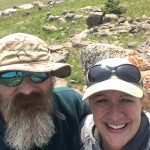
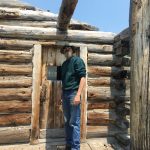 My nephew, Steve Moore is one of the most at home in the mountains people I know. He and his wife, my niece, Machelle love sending time in the Big Horn Mountains near their home in Powell, Wyoming. Their favorite thing to do there is to go exploring on new trails or roads, in areas they haven’t explored before. This past summer, while exploring such an area,the came across a cabin. It was in such a beautiful setting, and of course, it heightened their desire to have their own cabin in the mountains, which I truly believe they will have one day. They had seen the road to the cabin before, and that day, they decided to go see where it led them. I think that if anyone I know could live off the grid, it would be Steve and Machelle. Steve is extremely handy when it comes to building things, and living off the land.
My nephew, Steve Moore is one of the most at home in the mountains people I know. He and his wife, my niece, Machelle love sending time in the Big Horn Mountains near their home in Powell, Wyoming. Their favorite thing to do there is to go exploring on new trails or roads, in areas they haven’t explored before. This past summer, while exploring such an area,the came across a cabin. It was in such a beautiful setting, and of course, it heightened their desire to have their own cabin in the mountains, which I truly believe they will have one day. They had seen the road to the cabin before, and that day, they decided to go see where it led them. I think that if anyone I know could live off the grid, it would be Steve and Machelle. Steve is extremely handy when it comes to building things, and living off the land.
Last winter, Steve decided to build a gun. It is a 22 Dasher. Steve has a Labradar Witch, which is a devise that 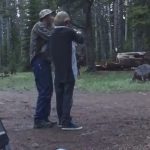
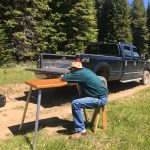 tells you how fast your bullets are going. He can measure the speed, and decide if he wants to add or subtract gun powder for reloading. The gun shoots accurately, and Steve got a couple few Rock-Chucks this summer on the mountain. While it is a great gun, it isn’t one that you want to have to pack very far, because it is pretty heavy. Their youngest son, Easton got to shoot Steve’s 1911 for the first time this summer. their older so Weston is four years older, and so has been shooting or a while now. Their ideal camping sot is one where nobody else is around for miles, so target practice can be done from camp. Another thing Steve likes to do in camp, is experiment with the fire. Of course, he is careful, but he can say for sure that discarded bacon grease will make the flames flair up nicely.
tells you how fast your bullets are going. He can measure the speed, and decide if he wants to add or subtract gun powder for reloading. The gun shoots accurately, and Steve got a couple few Rock-Chucks this summer on the mountain. While it is a great gun, it isn’t one that you want to have to pack very far, because it is pretty heavy. Their youngest son, Easton got to shoot Steve’s 1911 for the first time this summer. their older so Weston is four years older, and so has been shooting or a while now. Their ideal camping sot is one where nobody else is around for miles, so target practice can be done from camp. Another thing Steve likes to do in camp, is experiment with the fire. Of course, he is careful, but he can say for sure that discarded bacon grease will make the flames flair up nicely.
Steve got a chainsaw from a really good friend last year, so firewood is never in short supply. He never has to be asked twice to go to get some firewood for camp, or for his father-in-law, LJ Cook’s garage. In fact they have so much now, that he had to tell us that’s enough…for probably the whole next winter. Te way Steve and 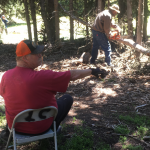
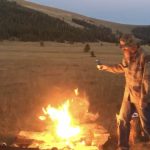 Machelle see it, better to have too much, than not enough. Needless to say there is also always enough firewood for camp too! Camping is a way of life for the Moore family, and this summer they tried to go someplace different, instead of always doing the same things, in the same places. They had a great time exploring new roads, hiking around, and just enjoying each others company. It was great while summer lasted, but they said that it sure went fast this year. Today is Steve’s birthday. Happy birthday Steve!! Have a great day!! We love you!!
Machelle see it, better to have too much, than not enough. Needless to say there is also always enough firewood for camp too! Camping is a way of life for the Moore family, and this summer they tried to go someplace different, instead of always doing the same things, in the same places. They had a great time exploring new roads, hiking around, and just enjoying each others company. It was great while summer lasted, but they said that it sure went fast this year. Today is Steve’s birthday. Happy birthday Steve!! Have a great day!! We love you!!
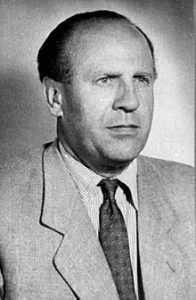 We have all heard of the atrocities that took place in Nazi Germany regarding the Jewish people. And many people might have seen the movie called Schindler’s List. When the movie came out, I did not have a real interest in the old war movies, but I really should have in this one, because it is not your typical war movie. The movie documents the actions of a member of the Nazi Party, who saw something that was morally wrong, and did something about it.
We have all heard of the atrocities that took place in Nazi Germany regarding the Jewish people. And many people might have seen the movie called Schindler’s List. When the movie came out, I did not have a real interest in the old war movies, but I really should have in this one, because it is not your typical war movie. The movie documents the actions of a member of the Nazi Party, who saw something that was morally wrong, and did something about it.
Schindler wasn’t what would be considered a moral upstanding citizen to the Christian way of thinking. He married Emilie Pelzl at nineteen, but was never without a mistress or two. When his family’s business went under, he presided over the the proceedings, and then became a salesman when opportunity came knocking in the form of the war. Schindler was never one to miss a chance to make money. He saw opportunity in Poland, so he marched in on the heels of the SS. Soon, he was deep into the black-market and the underworld..making friends with the Gestapo officials along the way…softening them up with women, money and illicit booze.

It was his newfound connections that helped him acquire the factory in Krakow during the German occupation of Poland, which he ran with the cheapest labor around…namely the Jewish people from the nearby Jewish ghetto. Schindler was a hard man, and didn’t care much about others, but somewhere along the line, something changed. When the Nazis decided to liquidate the ghetto, he persuaded the officials to allow the transfer of his workers to the Plaszow labor camp. I’m not sure what they workers thought of that situation right away, but in the end, to saved them from deportation to the death camps, for which they were grateful.
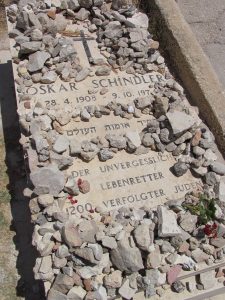
By 1944, Hitler had become more and more crazed, and all the Jews at Plaszow were to be sent to Auschwitz, but Schindler couldn’t bear to see his workers murdered by Hitler. Schindler decided to take a huge risk, and bribe the officials into allowing him to keep his workers and set up a factory in a safer location in occupied Czechoslovakia. Miraculously, they agreed to let him have his workers, probably thinking of the factory’s production, and not the fact that these Jews would not meet the horrible fate awaiting them in the death camps. So, Schindler gave them a list of his workers, and of course, that is where the name of the movie came from. By the war’s end, Schindler was penniless, but he had saved 1,200 Jews. And that makes him a very rich man, indeed. In 1962, he was declared a Righteous Gentile by Yad Vashem, Israel’s official agency for remembering the Holocaust. Oskar Schindler died on this day, October 9, 1974, and according to his wishes, he was buried in Israel at the Catholic cemetery on Mount Zion.
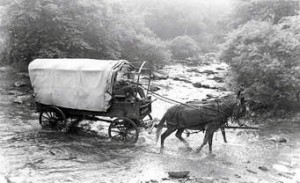 When the pioneers headed west, they were leaving the comforts of home behind. They would be traveling in covered wagons, with bushes for restrooms and rivers for bathtubs. Water was often scarce, so daily bathing was out of the question. You bathed when you came upon a creek or river, and drinking water was far too valuable to waste on such frivolous things as bathing. That said, anyone who has ever camped out where there was not a readily available water source, can tell you that people can get pretty stinky before they finally get to a place where they can bathe. I suppose that is why many of the women…if they were financially able, had things like lemon verbena to cover the inevitable odors. While things like toileting and bathing were inconveniences, they were things people learned to live with as they traveled west in search of a homestead, and they weren’t usually life threatening, other than transferring of germs from less than clean hands to food that was to be eaten.
When the pioneers headed west, they were leaving the comforts of home behind. They would be traveling in covered wagons, with bushes for restrooms and rivers for bathtubs. Water was often scarce, so daily bathing was out of the question. You bathed when you came upon a creek or river, and drinking water was far too valuable to waste on such frivolous things as bathing. That said, anyone who has ever camped out where there was not a readily available water source, can tell you that people can get pretty stinky before they finally get to a place where they can bathe. I suppose that is why many of the women…if they were financially able, had things like lemon verbena to cover the inevitable odors. While things like toileting and bathing were inconveniences, they were things people learned to live with as they traveled west in search of a homestead, and they weren’t usually life threatening, other than transferring of germs from less than clean hands to food that was to be eaten.
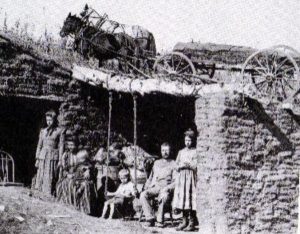
One of the most important things to know, of course, was what to do in the event of an emergency. An injury that is not take care of can quickly turn septic. And an illness that is treated in the wrong way, can bring death. That was one of the more difficult problems the pioneers faced. There were no doctors in nearby towns, and often there were no nearby rows either. They had to fend for themselves. And if they didn’t know what to do, people died. These days many people rely on a doctor or nurse for most illnesses, but the did not have that luxury. They had to be their own doctors and nurses.
The pioneers also had to know how to build their own homes, even if they had never really built a house before. Just because someone has lived in, or seen a house built, dies not mean that you automatically know 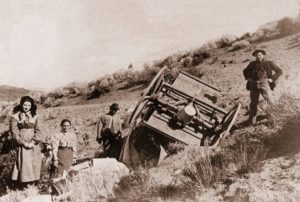 how to build one. They had to know how to fix a broken wagon or wagon wheel, and how to shoe a horse. These were not normally skills that just everyone knew. And they certainly aren’t the life skills that any of the students of today would be taught in a life skills class, but I suppose that life skills is a class that has to be suited to the times. These days, life skills classes might include cooking and sewing, budgeting, and child care. I suppose it was taken for granted that people knew those things before they headed west in the days of the pioneers. These days it seems that fewer and fewer have those skills. I used to think life skills was rather a wasted class, but I suppose that depending on what is taught, maybe it isn’t.
how to build one. They had to know how to fix a broken wagon or wagon wheel, and how to shoe a horse. These were not normally skills that just everyone knew. And they certainly aren’t the life skills that any of the students of today would be taught in a life skills class, but I suppose that life skills is a class that has to be suited to the times. These days, life skills classes might include cooking and sewing, budgeting, and child care. I suppose it was taken for granted that people knew those things before they headed west in the days of the pioneers. These days it seems that fewer and fewer have those skills. I used to think life skills was rather a wasted class, but I suppose that depending on what is taught, maybe it isn’t.
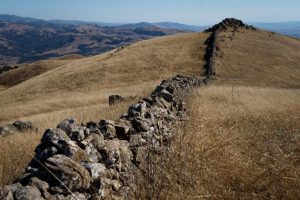 There is a wall that lots o people might have known about, or maybe few people know about, but while I’m sure I’ve seen parts of it in movies, I didn’t really know about it. The series of walls, known as the East Bay Walls or the Berkeley Mystery Walls. Of course that doesn’t really apply to one area, because the reality is that there are many of the crude walls throughout the hills surrounding the San Francisco Bay area. In some place the walls are as much as 3 feet tall, and 3 feet wide. The walls are very old and they were built without mortar. The walls run in sections, and they can be a few feet to over a mile long. Even more odd, is the fact that the rocks are a variety of sizes ranging from basketball-sized rocks, to large sandstone boulders weighing a ton or more. Parts of the walls seem to be just piles of rocks, but in other places it appears the walls were carefully constructed. No one knows the exact age of the walls, but they have an old appearance. Many of the formations have sunk far into the earth, and are often completely overgrown with different plants. The walls are not continuous, so they are not fences. They are not tall enough to have been used as defensive walls. The East Bay Regional Park District simply calls them “rock walls” and insists that they are not mysterious. Livestock, such as cattle, have grazed in the east and south Bay Area hills since the arrival of European
There is a wall that lots o people might have known about, or maybe few people know about, but while I’m sure I’ve seen parts of it in movies, I didn’t really know about it. The series of walls, known as the East Bay Walls or the Berkeley Mystery Walls. Of course that doesn’t really apply to one area, because the reality is that there are many of the crude walls throughout the hills surrounding the San Francisco Bay area. In some place the walls are as much as 3 feet tall, and 3 feet wide. The walls are very old and they were built without mortar. The walls run in sections, and they can be a few feet to over a mile long. Even more odd, is the fact that the rocks are a variety of sizes ranging from basketball-sized rocks, to large sandstone boulders weighing a ton or more. Parts of the walls seem to be just piles of rocks, but in other places it appears the walls were carefully constructed. No one knows the exact age of the walls, but they have an old appearance. Many of the formations have sunk far into the earth, and are often completely overgrown with different plants. The walls are not continuous, so they are not fences. They are not tall enough to have been used as defensive walls. The East Bay Regional Park District simply calls them “rock walls” and insists that they are not mysterious. Livestock, such as cattle, have grazed in the east and south Bay Area hills since the arrival of European 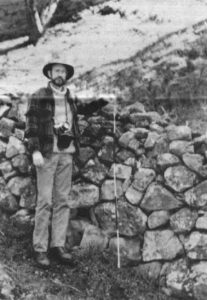 settlers. Clearing land of scattered rocks would have eased the ability to move livestock. Placing the rocks into walls would have helped to guide the movement of the animals or to help corral them. That makes sense, but some of those rocks were very heavy. So how did they do that.
settlers. Clearing land of scattered rocks would have eased the ability to move livestock. Placing the rocks into walls would have helped to guide the movement of the animals or to help corral them. That makes sense, but some of those rocks were very heavy. So how did they do that.
There is no written documentation to identify when they were built, by whom, or why. So, some people consider them mysterious. It has been suggested that the Ohlone Indians might have been the builders, but in reality, they were hunter-gatherers, and didn’t build permanent structures. Some specialists have mentioned that the walls look similar to structures found in rural Massachusetts, Vermont, and Maine, but they are different in that those walls were built around farms by the early setters, and these don’t have the same kinds of layouts. In 1904, UC-Berkeley Professor John Fryer suggested that the walls were made by Mongolian Chinese who traveled to California before the Europeans. Unfortunately, there is little evidence for this or for pre-Columbian Chinese influence in America. Forensic geologist Scott Wolter has theorized that the wall is only two to three hundred years old, suggested by the thick weathering rind on the limestone rock he was authorized to sample. Recent testing of lichen on the rocks suggests that they were probably built between 1850 and 1880, the early American era in California. Settlers might have built the walls using Chinese, Mexican, or Native American laborers, although specifically who built them has not been determined.
One of the many old stone walls that appear around the San Francisco Bay area is in the foothills of eastern 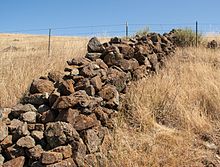 Santa Clara County. The stone walls are accessible in several area parks, including Ed R. Levin County Park in Santa Clara County and Mission Peak Regional Preserve in Alameda County, as well as many other parks. As of 2016, archaeologist Jeffrey Fentress has been measuring and mapping the walls, hoping to eventually gain protection from development or other destruction. Additional stone walls with unclear origin or purpose occur in other places near the San Francisco Bay, and researchers continue to discover more information about the walls. Whether these walls had a purpose at one time or not, they are certainly strange to those who try to look into them these days.
Santa Clara County. The stone walls are accessible in several area parks, including Ed R. Levin County Park in Santa Clara County and Mission Peak Regional Preserve in Alameda County, as well as many other parks. As of 2016, archaeologist Jeffrey Fentress has been measuring and mapping the walls, hoping to eventually gain protection from development or other destruction. Additional stone walls with unclear origin or purpose occur in other places near the San Francisco Bay, and researchers continue to discover more information about the walls. Whether these walls had a purpose at one time or not, they are certainly strange to those who try to look into them these days.
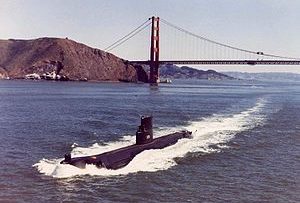 Submarines have always fascinated me. To be able to travel completely submerged for extended periods of time is quite amazing. One of the greatest submarines ever was the USS Seawolf (SSN 575). Seawolf was not the first nuclear submarine. That honor goes to the Nautilus, but the Seawolf was an amazing submarine with an amazing future ahead of her. The Seawolf was built by the General Dynamics Corporation’s Electric Boat Division, Groton, Connecticut, and was laid September 15, 1953. Mrs. W. Sterling Cole christened the SEAWOLF at the launching ceremony on July 21, 1955 under the command of Commander Richard B. Laning, United States Navy.
Submarines have always fascinated me. To be able to travel completely submerged for extended periods of time is quite amazing. One of the greatest submarines ever was the USS Seawolf (SSN 575). Seawolf was not the first nuclear submarine. That honor goes to the Nautilus, but the Seawolf was an amazing submarine with an amazing future ahead of her. The Seawolf was built by the General Dynamics Corporation’s Electric Boat Division, Groton, Connecticut, and was laid September 15, 1953. Mrs. W. Sterling Cole christened the SEAWOLF at the launching ceremony on July 21, 1955 under the command of Commander Richard B. Laning, United States Navy.
Unlike, Nautilus, the Seawolf used liquid sodium instead of water as a moderator and cooling medium. The Seawolf was to be given many honors and awards during her time of service, with one of the greatest being on September 26, 1957, when Seawolf hosted President Dwight D. 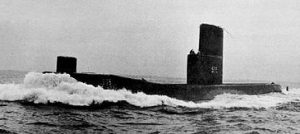 Eisenhower for a submerged run off Newport, Rhode Island. It was the first time the Commander and Chief was transported by nuclear propulsion. That makes it an amazing event for the Seawolf and for the President. Additionally, while on a port visit in Provincetown, Massachusetts, Seawolf was host to NBC telecast of “Wide, Wide World” on December 8, 1957.
Eisenhower for a submerged run off Newport, Rhode Island. It was the first time the Commander and Chief was transported by nuclear propulsion. That makes it an amazing event for the Seawolf and for the President. Additionally, while on a port visit in Provincetown, Massachusetts, Seawolf was host to NBC telecast of “Wide, Wide World” on December 8, 1957.
One of the greatest moments, however, happened on October 6, 1958. After submerging on August 7, 1958, Seawolf remained submerged for a full 60 days. During that time she was completely independent of the Earth’s atmosphere. The submarine was self sufficient and able to produce all the life sustaining air and water the crew would need for life. It was an unheard of accomplishment. Of course, that record would be broken in 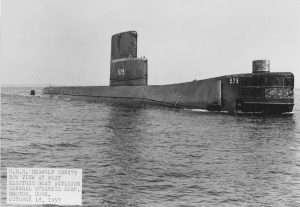 the future, including twice by Seawolf herself. In 1976, Seawolf remained submerged for a US Navy record breaking 87 days. In 1977 she again went under, this time staying submerged for 79 days. Over the years of service, Seawolf received four Battle Efficiency “E” awards for excellence in battle. She received three Engineering “E” for Excellence, three Supply “E” awards, a Communications “C” award, a Damage Control “DC” award, and the Dec Seamanship Award. In April 1986 USS Seawolf (SSN 575) was decommissioned, but her name has lived on in other submarines named in her honor. The USS Seawolf (SSN 575) was truly an amazing submarine.
the future, including twice by Seawolf herself. In 1976, Seawolf remained submerged for a US Navy record breaking 87 days. In 1977 she again went under, this time staying submerged for 79 days. Over the years of service, Seawolf received four Battle Efficiency “E” awards for excellence in battle. She received three Engineering “E” for Excellence, three Supply “E” awards, a Communications “C” award, a Damage Control “DC” award, and the Dec Seamanship Award. In April 1986 USS Seawolf (SSN 575) was decommissioned, but her name has lived on in other submarines named in her honor. The USS Seawolf (SSN 575) was truly an amazing submarine.
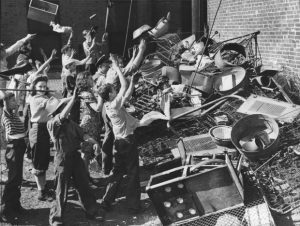 When the United States was pulled into World War II following the Japanese attack on Pearl Harbor. raw materials were in high demand globally, and hard to come by. Commodities such as rubber and cloth became precious and very valuable to the war effort. Many of the men were now off fighting the war, and so the factories, mines, etc. were not producing the necessary materials to build the much needed military equipment and weapons for the war effort.
When the United States was pulled into World War II following the Japanese attack on Pearl Harbor. raw materials were in high demand globally, and hard to come by. Commodities such as rubber and cloth became precious and very valuable to the war effort. Many of the men were now off fighting the war, and so the factories, mines, etc. were not producing the necessary materials to build the much needed military equipment and weapons for the war effort.
When it was decided that the country needed a drive to supply these materials, the Community-Minded Patriotism of the United States Home Front swung into action. The nation decided that they needed a drive to collect the materials needed. On Oct. 5, 1942, the first day of the first drive, young people throughout the city and county hauled in 2,800 tons of scrap metal to feed industry during World War II. By Oct. 16, the end of the campaign, their total was 7,658 tons, which is the combined weight of 230 Sherman tanks.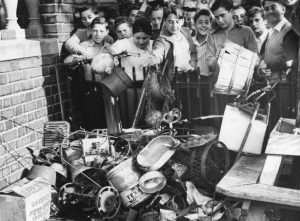
More scrap drives were organized across the country, encouraging citizens to contribute their rubber to make jeep tires, their clothing to make cleaning rags, their nylon and silk stockings to make parachutes, and their leftover cooking fat to make explosives. One of the most vital materials to collect was scrap metal. A single medium tank required 18 tons of it, and a single Navy ship hundreds more. For many people, I’m sure it looked like a great way to get rid of all those items most of us would try to unload at a garage sale.
The scrap metal drives became very competitive, almost frenzied affairs, as communities fought to out-contribute each other. Housewives threw in their aluminum pots and pans, farmers sacrificed their old tractors, and cities and towns ripped up wrought iron fences, trolley tracks and historic Civil War cannons. People were encouraged to imagine their household items being transformed into armor and weaponry for their soldiers and 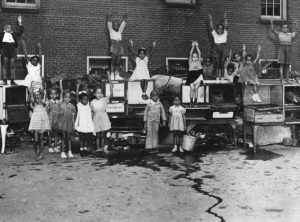 sailors in harm’s way. It was a great way to energize the Home Front. In Lubbock, Texas, a bust of Hitler was erected as a target for patriotic citizens to hurl their cookware. It was a way to take out their anger a little bit, and it worked. Walt Disney donated two iron Bambi sculptures, which were said to contain enough iron for 10,000 incendiary bombs or one 75 millimeter artillery piece. In all reality, the effect of these scrap metal drives on actual war production was very small, marginal at best. Nevertheless, their true value was in galvanizing citizen morale and a sense of patriotic unity…making everyone like they took part in the war effort. So, in the end, the scrap days did their job very well.
sailors in harm’s way. It was a great way to energize the Home Front. In Lubbock, Texas, a bust of Hitler was erected as a target for patriotic citizens to hurl their cookware. It was a way to take out their anger a little bit, and it worked. Walt Disney donated two iron Bambi sculptures, which were said to contain enough iron for 10,000 incendiary bombs or one 75 millimeter artillery piece. In all reality, the effect of these scrap metal drives on actual war production was very small, marginal at best. Nevertheless, their true value was in galvanizing citizen morale and a sense of patriotic unity…making everyone like they took part in the war effort. So, in the end, the scrap days did their job very well.
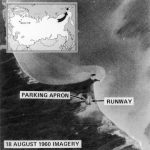 The Nazi bombers were notorious for their sneaky bomber raid, especially the night bombings. The British decided that it was time for start fighting back. So they came up with the idea of using German speaking individuals to impersonate German air controllers, broadcasting false orders to confuse German fighter pilots. The plan was called Operation Corona, and the scope of the operation was massive, but ironically, it was only made possible because of German-speaking Jewish refugees who had escaped Germany and settled in Britain. What an amazing way for the Jewish refugees to be able to get back at the Nazis for the horrid treatment they had received and that they had escaped thankfully. Now, these refugees were breaking into Luftwaffe radio channels and playing wreaking havoc on the Luftwaffe’s ability to direct their night fighters.
The Nazi bombers were notorious for their sneaky bomber raid, especially the night bombings. The British decided that it was time for start fighting back. So they came up with the idea of using German speaking individuals to impersonate German air controllers, broadcasting false orders to confuse German fighter pilots. The plan was called Operation Corona, and the scope of the operation was massive, but ironically, it was only made possible because of German-speaking Jewish refugees who had escaped Germany and settled in Britain. What an amazing way for the Jewish refugees to be able to get back at the Nazis for the horrid treatment they had received and that they had escaped thankfully. Now, these refugees were breaking into Luftwaffe radio channels and playing wreaking havoc on the Luftwaffe’s ability to direct their night fighters.
On one night in 1943, the British managed to get almost all the German night fighters to fly home, and only one aircraft was lost during that night. Another night, a German night fighter, who was already lost, was redirected to a British airfield and captured. I can’t imagine what was going on in the minds of the commanding officers in charge of the night fighters. Their men were presumably, totally mixed up, and every mission failed to bring the desired result.
For me, the most amazing part has to do with the Jewish involvement. Hitler was so intent on killing the Jewish 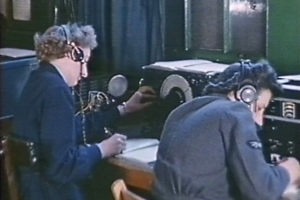 people, and in this instance, it was a group of Jewish people who were able to pull of a great victory over Hitler and his night fighter pilots. Operation Corona was made possible because before the war many people, mostly Jews, fled Nazi Germany to England, and I seriously doubt if Hitler ever knew what happened, but those people who were involved knew, and while they were not able to help their own people directly, I’m sure it gave them some satisfaction to know that they were doing their part to fight against the horrible dictator who was responsible for the deaths of so many of their people. Operation Corona gave them the opportunity they needed to do something big to help in ending the war and bringing victory to the Allies, thereby helping many of their own people too.
people, and in this instance, it was a group of Jewish people who were able to pull of a great victory over Hitler and his night fighter pilots. Operation Corona was made possible because before the war many people, mostly Jews, fled Nazi Germany to England, and I seriously doubt if Hitler ever knew what happened, but those people who were involved knew, and while they were not able to help their own people directly, I’m sure it gave them some satisfaction to know that they were doing their part to fight against the horrible dictator who was responsible for the deaths of so many of their people. Operation Corona gave them the opportunity they needed to do something big to help in ending the war and bringing victory to the Allies, thereby helping many of their own people too.
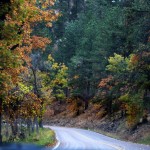
 As I was thinking about today, I found that today is actually a special day…Look at the Leaves Day. Now, if you are like me, you have likely never heard of Look at the Leaves Day, or if you have, you might have wondered if it was a day that was inspired by a science teacher, or something. And, maybe it was in the beginning, but this time of year, the leaves truly are something interesting, especially if you live in an area where there is a variety of fall colors in the leaves. I live in an area where the leaves mostly have two colors…green and yellow, unless you count brown as a pretty fall color…which I don’t.
As I was thinking about today, I found that today is actually a special day…Look at the Leaves Day. Now, if you are like me, you have likely never heard of Look at the Leaves Day, or if you have, you might have wondered if it was a day that was inspired by a science teacher, or something. And, maybe it was in the beginning, but this time of year, the leaves truly are something interesting, especially if you live in an area where there is a variety of fall colors in the leaves. I live in an area where the leaves mostly have two colors…green and yellow, unless you count brown as a pretty fall color…which I don’t.
Nevertheless, looking at the leaves always has a mesmerizing effect on us. I love watching the leaves as they flutter to the ground. The color doesn’t matter at that point. They just look so peaceful on their journey. It is a part of their life cycle. It’s what they do. Grow and flourish, and then in Autumn, they fade and and fall to the ground. They’re all gone by winter, and the trees spend the rest of the Winter looking like skeletons, while they wait for spring when they get their new leaves.
As my husband and I went for a walk tonight, I found myself taking that extra moment to actually look at the leaves. It’s not that I never looked at them before, but today felt…different somehow. I noticed how one tree could be green, and the one next to it yellow. Some trees were half green and half yellow. The few trees and bushes we have in this area that turn red, added a flame-like flair to the look. When I took the time to really look at them, I began to notice how very beautiful they were. I thought about other walks we had taken in the fall. Some of my favorites are on some of the trails in the Black Hills. When you are walking through the trees 
 on a dirt trail, with the leaves dropping all around you, you really feel like you can embrace the season.
on a dirt trail, with the leaves dropping all around you, you really feel like you can embrace the season.
Today was Look at the Leaves Day. It is a day for us to stop rushing around, busy with our hurried lives, and maybe take a few minutes to see the splendor of Autumn for a change. I’m seriously not a winter person, but Autumn is definitely a season that I enjoy. It’s sheer beauty captivates me…for a while, until Autumn gives way, and its ugly sister season…Winter enters in…and I want to be the one to hibernate.
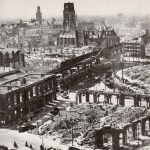 After World War II, most of Europe was in a big mess, whether it was the land,the cities and towns, or the government. There were scores of dead people around, countries and borders were torn apart, most of Europe had been “ground into a very civilized kind of pudding…and the USSR was knocking on the door to come and raid the fridge…so to speak.” Russia would have loved to sneak in and take over when they were at their most vulnerable. The people looked to the United States to figure out away to keep them safe, but not to occupy their countries, per se. That is a rather tall order, but one that the United States took seriously.
After World War II, most of Europe was in a big mess, whether it was the land,the cities and towns, or the government. There were scores of dead people around, countries and borders were torn apart, most of Europe had been “ground into a very civilized kind of pudding…and the USSR was knocking on the door to come and raid the fridge…so to speak.” Russia would have loved to sneak in and take over when they were at their most vulnerable. The people looked to the United States to figure out away to keep them safe, but not to occupy their countries, per se. That is a rather tall order, but one that the United States took seriously.
So the United States came up with Operation Gladio. Basically, they installed a secret military that would unofficially operate all across Europe. The secret military would have one and only one goal…combating communism. Little is known about this secret military, even today, because it wouldn’t be a very good secret army if we knew all about them. So, facts are pretty limited, but it’s not some crazy theory either. Their existence has been confirmed, and the network has been associated with such high-stakes super-evil events, as an attempted pope assassination, large scale bombings, and kidnappings of several high-level government officials. They were willing to do anything to fight communism…murder, extortion, even seemingly becoming communists, if that’s what it took. It turns out that the Italian branch was a particularly active group. An entirely different president of Italy, Francesco Cossiga, was involved in this ominous anti-communism secret society. The reason we don’t know more about them, even years after the end of the Cold War, is simple: crazy, crazy murders. Their secrets will follow them to the grave.
Then a new Italian president was elected. President Aldo Moro, wanted to allow communists to run for office.The still operating Gladio could not let this happen. He was suddenly kidnapped and eventually executed. 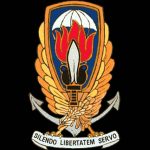 His body was found in the trunk of a car parked next to an ancient gladiatorial site. A warning to others…more than probably!! A “gladio” is an ancient Roman short sword, used in arena combat. A former colonel of Gladio operations in Switzerland decided to write a letter to the government stating that he was ready to “reveal the whole truth.” Again, Operation Gladio took action. The Gladio colonel was found dead in his home a month later. He was stabbed to death with his own bayonet. There were a series of mysterious characters written on his chest that couldn’t be deciphered. Of course, that’s not concrete evidence of Gladio’s direct involvement in these events, but these are just two brutal, worrying events that spin a web of mystery and fear that keeps further investigations from being opened. Sometimes, it’s best to let sleeping dogs lie.
His body was found in the trunk of a car parked next to an ancient gladiatorial site. A warning to others…more than probably!! A “gladio” is an ancient Roman short sword, used in arena combat. A former colonel of Gladio operations in Switzerland decided to write a letter to the government stating that he was ready to “reveal the whole truth.” Again, Operation Gladio took action. The Gladio colonel was found dead in his home a month later. He was stabbed to death with his own bayonet. There were a series of mysterious characters written on his chest that couldn’t be deciphered. Of course, that’s not concrete evidence of Gladio’s direct involvement in these events, but these are just two brutal, worrying events that spin a web of mystery and fear that keeps further investigations from being opened. Sometimes, it’s best to let sleeping dogs lie.

